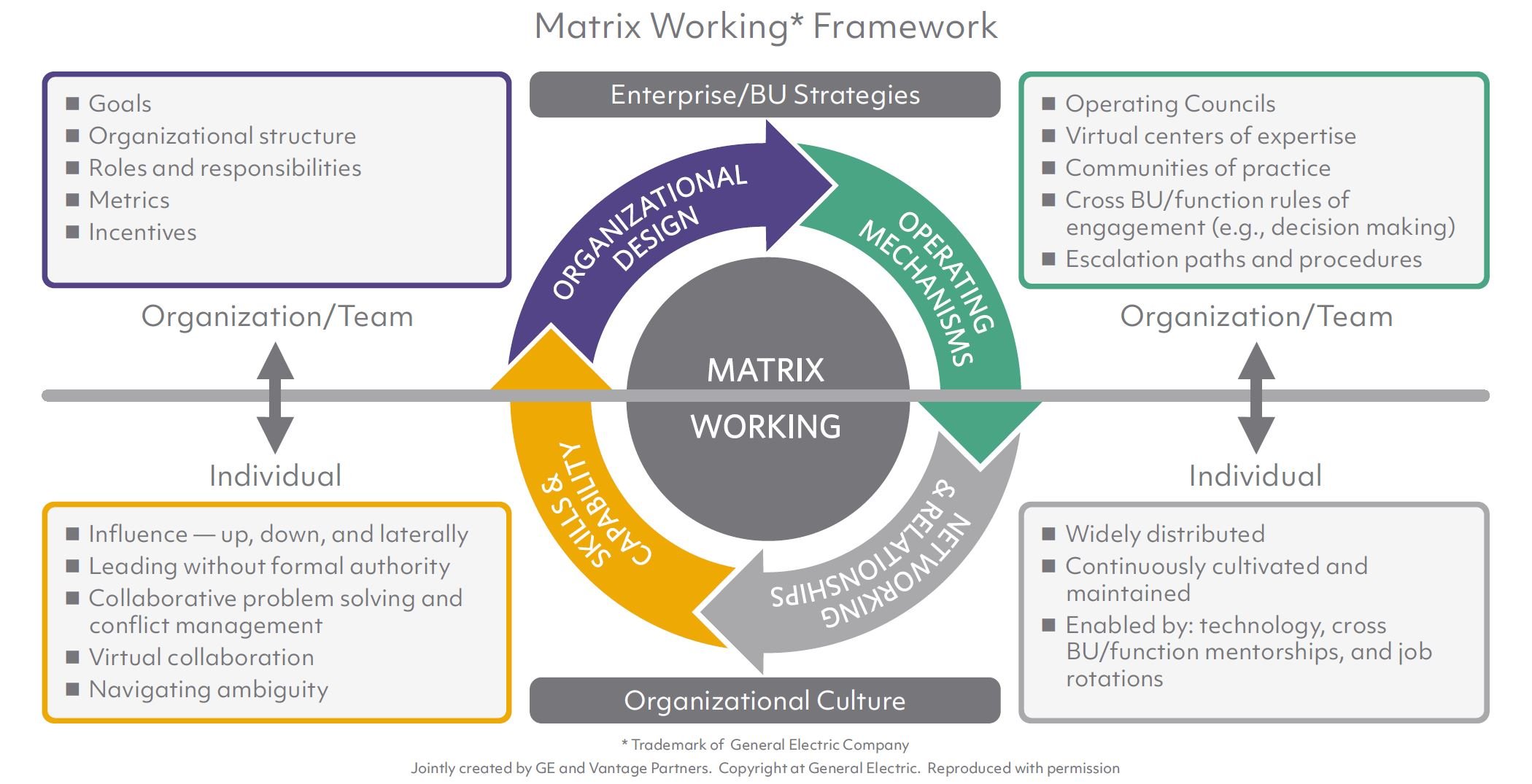
There’s nothing new about matrixed organizational structures. They have been the norm for decades. But the passage of time has not lessened the challenges associated with working in a matrix — or with making a matrix work. Multiple reporting lines and a lack of dedicated staff, teams that form and dissolve as initiatives are launched and completed, and the need to work with other who have different goals, priorities, and operating procedures often lead to decision-paralysis, delayed execution, conflict, and frustration. No wonder the matrixed organization is often referred to as a place where anyone can say “No” and no one can say “Yes”!
The following may sound familiar:
“No one takes accountability!”
“I don’t even know what is a priority. No one seems to know!”
“Decision making is so slow around here!”
“I thought the matrix was supposed to encourage collaboration not power plays!”
Nonetheless, a matrix that functions effectively is the most flexible and nimble of organizational structures, and one with the greatest potential to deliver innovation. However, in reality, it often plays out differently. One primary reason is that the culture of many organizations is still aligned to outdated organizational models. Alignment is prized over diversity of thinking. Conflict is seen as a liability rather than a potential asset. Individual contribution and results are recognized and rewarded more than collaborative efforts and results.
Matrixed companies need processes, operating procedures, and management systems that encourage cross-boundary collaboration. Employees need to embrace tension across goals and priorities as inevitable, and even healthy. They need skills to work to solve problems and make decisions in the face of differences, and constructively influence those whose help they need, but who do not report to them, nor to their boss. Formal and informal incentives need to recognize and reward those who seek to creatively balance competing priorities and transcend a parochial focus only on their own department or division.
A few years ago, Vantage worked with General Electric to investigate barriers to making their matrix work effectively. We identified four primary dimensions that need to be addressed and aligned to capture the value inherent in the matrixed structure. Two of the dimensions are about the organization and represented above the line on the framework, and two dimensions are about individuals, and represented below the line. This framework applies at all levels — the enterprise as a whole, a business unit or functional group (which is often itself matrixed), a regional team, or a cross-functional project team. Of course, depending on your seniority and role in your company, you may have much greater ability to take action along some of these versus others.

Organization Level
Organizational Design
Reporting lines within a matrix are inherently complex, and goals and incentives will never be perfectly aligned across all the dimensions of a matrix. That said, minimizing unnecessary and unproductive areas of misalignment or ambiguity is essential.
Operating Mechanisms
Rather than seeking to completely eliminate conflict through formal means, Operating Mechanisms essentially function as fluid, “low-overhead” ways to reduce friction as individuals and teams work across business units and functions, and encourage cross-boundary collaboration.
Individual Level
Networking and Relationships
Do employees know the people they should? Do they know how to expand their network? Do they take into account culture and geographic differences? Do they know how to build trusting relationships (both when co-located and virtual)?
Skills and Capabilities
Do employees and their team members have the mindset and skills to collaborate and influence effectively — a mindset this is based on problem-solving versus persuading the other person to agree with you? Can you do this both in-person and virtually? Can they lead up, down, and across?
By taking action within each quadrant of the Matrix Working Model, senior executives, managers, team leaders, and even individual contributors can all play a role in unlocking the potential of the matrix to deliver speed, agility, and innovation.
Click here to read more about our Organizational Effectiveness practice.
.png?width=512&height=130&name=vantage-logo(2).png)

